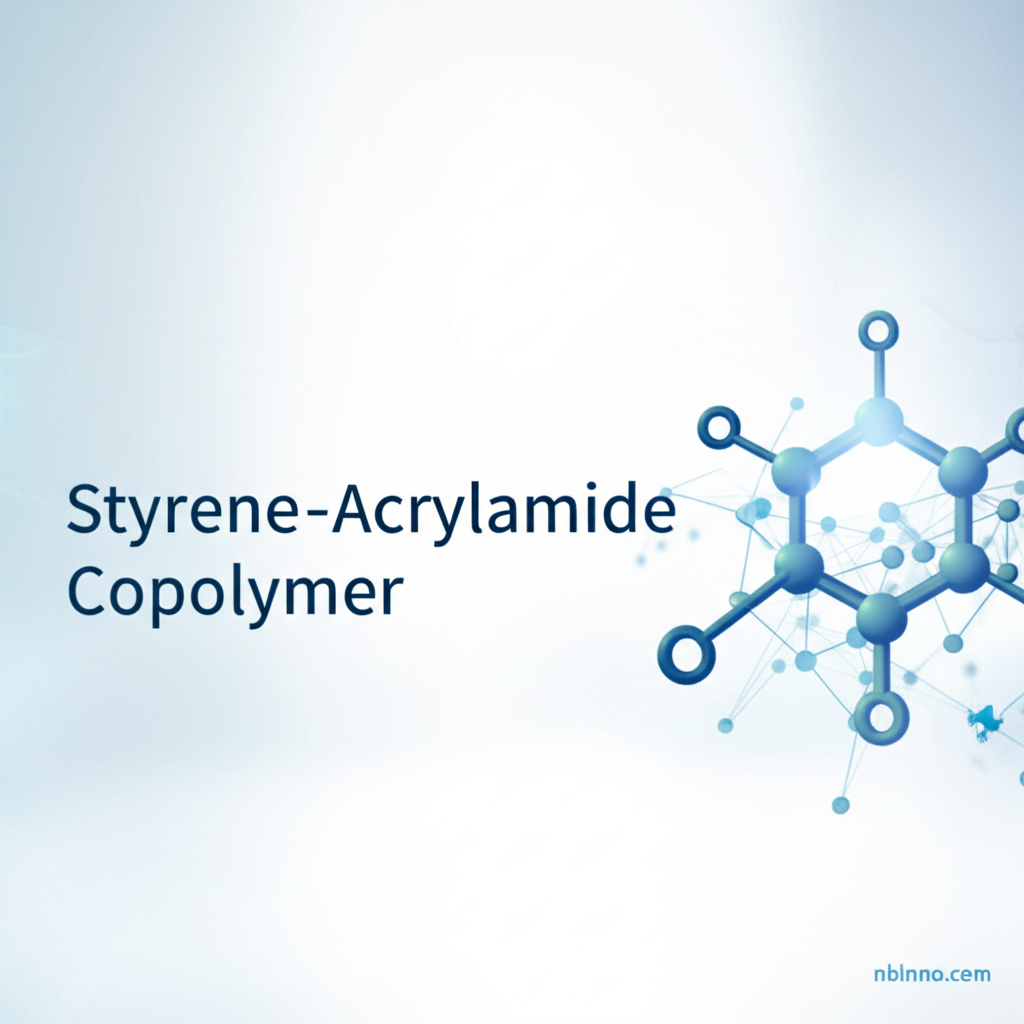Advanced Sorbent Materials for Environmental Remediation
Exploring the potential of styrene-acrylamide copolymers and their functionalized grafts for efficient heavy metal removal.
Get a Quote & SampleProduct Core Value

Styrene-Acrylamide Copolymer
This styrene-acrylamide copolymer, synthesized via free radical emulsion polymerization, serves as a foundational material for developing advanced sorbents. Its structure can be further modified through grafting with aniline or 2-chloroaniline to significantly enhance its capacity for removing hazardous pollutants like mercuric ions from water and industrial effluents.
- Demonstrating effective styrene acrylamide copolymer mercury removal capabilities, particularly when functionalized.
- Utilizing polyacrylamide graft copolymers for efficient heavy metal adsorption, showing promising results in environmental cleanup.
- Highlighting free radical emulsion polymerization for sorbents, a key technique in creating functional polymeric materials.
- Investigating polyaniline graft copolymer adsorption kinetics to understand the rate and efficiency of pollutant uptake.
Key Advantages
Enhanced Pollutant Capture
The grafting process significantly improves the copolymer's efficiency for heavy metal adsorption, with specific grafts achieving nearly 100% removal of mercuric ions, showcasing its potential in wastewater treatment.
Tunable Material Properties
Through controlled polymerization and grafting, materials with varied surface areas, pore sizes, and thermal stabilities can be developed, allowing for tailored applications in environmental remediation.
Understanding Adsorption Mechanisms
The study provides critical insights into the thermodynamics and kinetics of mercury adsorption, revealing an endothermic, spontaneous process that follows pseudo-second-order kinetics, crucial for optimizing removal strategies.
Key Applications
Water Treatment
Ideal for removing toxic heavy metals like mercury from industrial wastewater, ensuring compliance with environmental regulations and protecting water resources.
Pollution Control
Serves as a novel sorbent material for capturing pollutants from aqueous environments, contributing to broader pollution control efforts.
Sorbent Development
Forms the basis for developing next-generation sorbent materials with superior performance characteristics for various environmental challenges.
Petroleum Industry Effluents
Specifically tailored for treating contaminated water streams in the petroleum sector, addressing mercury contamination issues.
